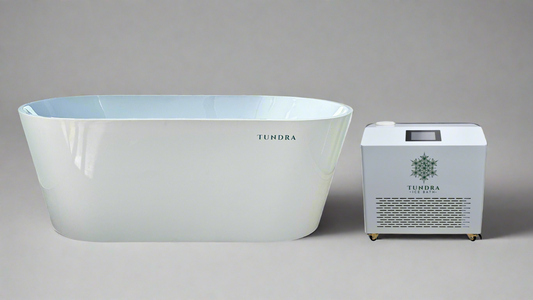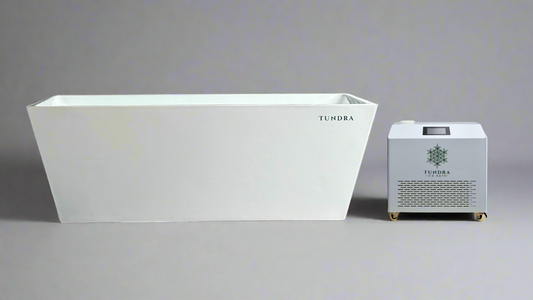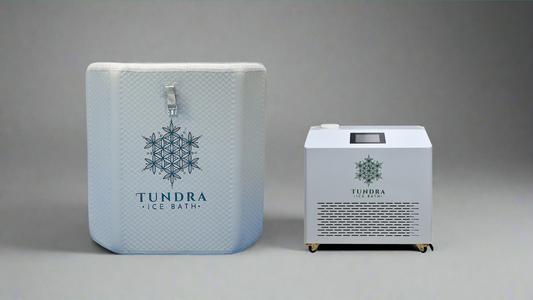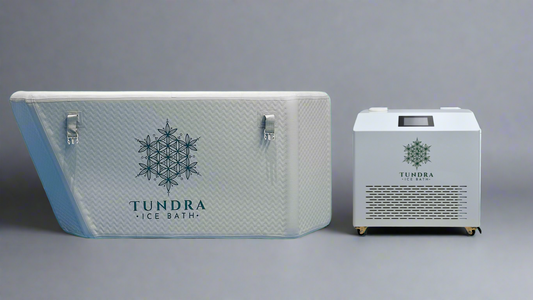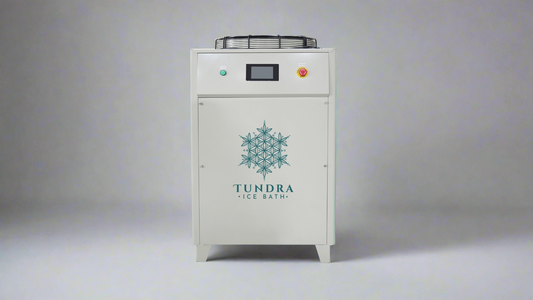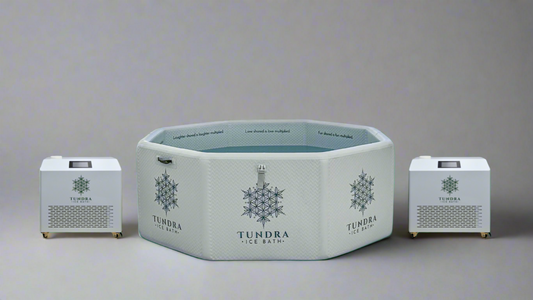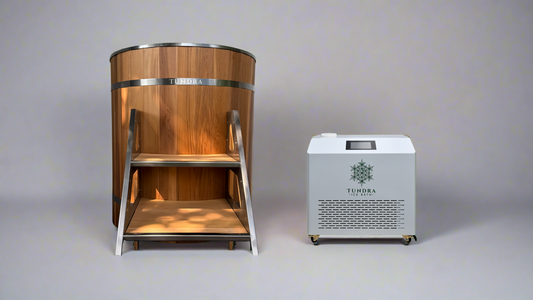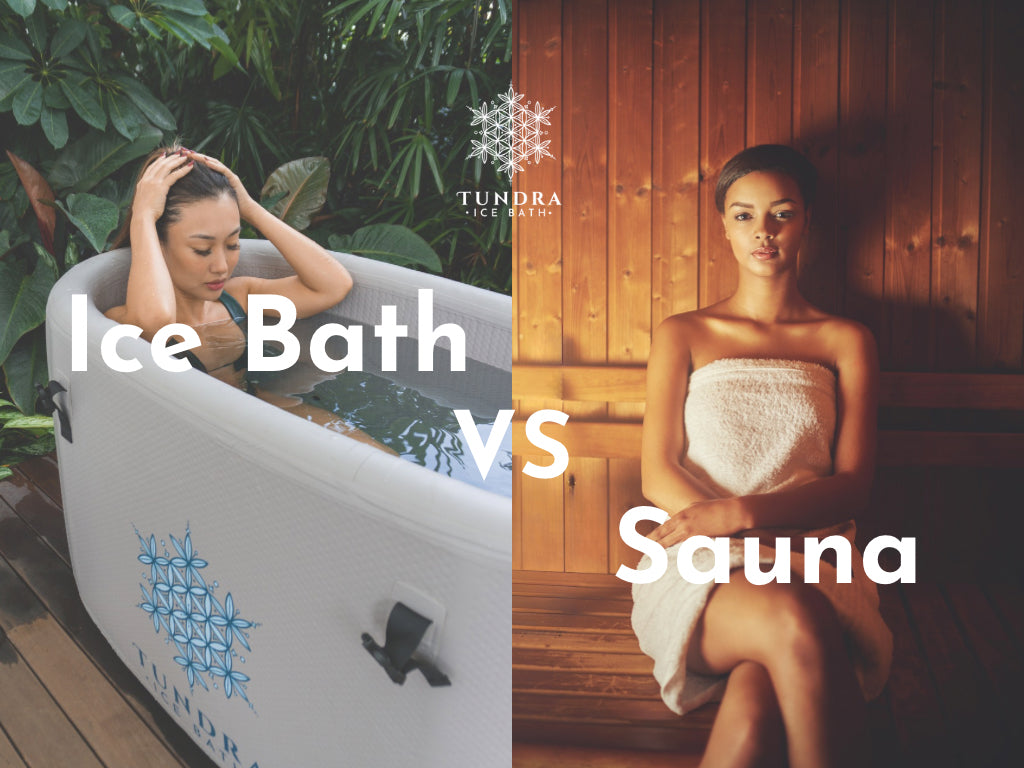
The Ultimate Guide to Ice Bath and Sauna: Key Differences, Benefits and Optimizing Your Routine
Share
Introduction
The wellness world is buzzing about contrast therapy — the combined use of ice baths and infrared saunas. With high-performance athletes, fitness enthusiasts, and wellness seekers embracing these practices, it’s no wonder interest is surging.
Both ice baths and infrared saunas offer unique benefits, from aiding recovery to enhancing overall health.
In this guide, we will dive into their differences and discuss whether to use an ice bath or sauna first depending on your wellness and recovery goals
Ice Bath vs Sauna: Key Benefits and Differences

Ice Baths:
- Reduced Inflammation:
Cold exposure constricts blood vessels, reducing inflammation and swelling. A study in the *Journal of Sports Sciences* found that ice baths may help minimize post-exercise muscle soreness.
- Muscle Recovery:
Rapid cooling aids in muscle repair after high-intensity workouts, supported by findings in *The American Journal of Sports Medicine*.
- Improved Circulation:
As blood vessels contract and then dilate post-ice bath, circulation improves, aiding in delivering nutrients to tired muscles.
- Enhanced Mental Resilience:
Cold exposure can build mental toughness by training the mind to remain calm in challenging environments. This stress-coping ability is often cited as a reason people continue cold therapy long-term.
- Boosted Immune System:
Some studies suggest that cold exposure may stimulate the immune system by increasing the production of immune cells, potentially offering greater resistance to

Infrared Saunas:
- Detoxification:
Infrared heat penetrates deep into tissues, prompting sweating and helping the body eliminate toxins.
- Relaxation and Stress Reduction:
Heat triggers endorphin release and soothes muscles, easing tension and promoting relaxation.
- Enhanced Circulation:
Infrared saunas gently increase heart rate and blood flow, which may mimic mild cardiovascular exercise, according to *Mayo Clinic Proceedings*.
- Pain Relief:
Infrared heat has been linked to pain relief in conditions like arthritis, muscle soreness, and fibromyalgia by increasing blood flow and reducing muscle stiffness, as reported in *Clinical Rheumatology*.
- Skin Health:
Regular infrared sauna sessions promote increased blood flow and sweating, potentially aiding in skin cell rejuvenation, removing impurities, and leading to clearer skin.
Ice Bath or Sauna First: Optimizing Your Routine
Should you start with an ice bath or sauna first? This largely depends on your personal wellness goals.
- For Recovery:
Start with the sauna to relax muscles and promote circulation, followed by an ice bath to reduce inflammation and seal the benefits.
- For Relaxation:
Reverse the order if your priority is stress reduction, allowing the sauna's warmth to relax your body after the ice bath's invigorating chill.
Alternating between the two is also an effective strategy. Read the following section for an ideal ice bath and sauna routine.
Mastering Contrast Therapy: Optimizing Your Wellness with Ice Bath and Sauna
If you're ready to incorporate contrast therapy into your wellness regimen, here's a quick guide on how to effectively use both an ice bath and an infrared sauna:
1. Preparation:
- Hydration:
Start well-hydrated, as contrast therapy involves sweating and temperature fluctuations that can deplete fluids.
- Timing:
Set aside around 30-45 minutes for a full session, with each interval lasting a few minutes.
2. Start with the Infrared Sauna:
- Duration:
Spend 10-15 minutes in the sauna. The gentle heat will warm your muscles, increase circulation, and promote relaxation.
- Temperature:
Ideally, the infrared sauna should be set to 120-140°F (49-60°C).
- Listen to Your Body:
If you feel uncomfortable, take a break.
3. Move to the Ice Bath:
- Preparation:
Ensure the ice bath is ready and cooled to 50-59°F (10-15°C).
- Duration:
Immerse your body for 3-5 minutes. If it's your first time, start with shorter intervals to acclimate.
- Breathing:
Focus on steady, deep breaths to manage the initial cold shock.
4. Alternate:
- Repeat:
Alternate between the sauna and ice bath two to three times if you’re comfortable. Each round will enhance circulation and optimize recovery.
5. Recovery and Hydration:
- Post-Session Rest:
After completing your session, relax for at least 10 minutes, allowing your body temperature to stabilize.
- Rehydration:
Drink water or an electrolyte drink to replenish fluids.
By alternating between hot and cold therapies, you encourage optimal recovery while benefiting from relaxation, detoxification, and enhanced circulation. The key is consistency and attentiveness to your body's responses.
TUNDRA’s Ice Bath Collection and Equinox Infrared Sauna
At TUNDRA, we offer a versatile collection of premium ice baths that align perfectly with your fitness and wellness goals. Our Equinox Infrared Sauna for 1 or 2 pax is a cutting-edge solution for those seeking enhanced recovery. Its deep-penetrating infrared technology provides comprehensive health benefits, seamlessly complementing the ice bath routine.
Conclusion
Ice baths and infrared saunas both offer significant benefits, from faster muscle recovery to stress reduction and potential weight loss support. By understanding their key differences and learning how to combine them effectively, you can take your wellness journey to the next level. Explore TUNDRA’s range of ice baths and the Equinox Infrared Sauna to discover the best recovery regimen for you.

